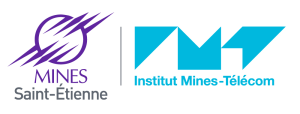- Gestionnaire: Yann GAVET
Person in charge
Yann Gavet / gavet@emse.fr / office C3-22
Objective
The objective of this UP is to know the concepts and classical tools of computational geometry to characterize, model and simulate point patterns or spatial objects distributions.
Content
This UP is mainly composed of lectures (10,5h), tutorials using Matlab (10,5h).
Evaluation
Two exams, theoretical (1,5h) and practical using Matlab (1,5h), will evaluate the learning of this UP.
Keywords
Point patterns, convex hull, Delaunay triangulation, alpha-shapes, statistical shape analysis
- Gestionnaire: Yann GAVET
Objective
The objective of this UP is to master the mathematical concepts and tools for the extraction of geometrical and morphometrical characteristics from images for using them in learning tools.
Content
This UP is mainly composed of lectures (15h), tutorials using Matlab (15h).
Evaluation
Two exams, theoretical (1,5h) and practical using Matlab (1,5h), will evaluate the learning of this UP.
Keywords
Convex geometry, integral geometry, fractal geometry, stochastic geometry, image analysis
- Gestionnaire: Yann GAVET

Person in charge
Yann GAVET / gavet@emse.fr / office C3-22
Objective
The objective of this UP is to get basic knowledge about machine learning on images for real applications. The training will be done on one or two real applications of image and pattern recognition, in the form of a case study, by using the mathematical and computational tools provided in the previous UPs.
Content
This UP is mainly composed of tutorials (in the form of a case study) using Matlab (23h).
Evaluation
A report on the selected subject will be asked to the student to evaluate his ability to use some basic machine learning techniques to answer image and pattern recognition applicative problems.
Keywords
Machine learning, neural networks, interpretation, decision
- Gestionnaire: Yann GAVET
- Gestionnaire: Yann GAVET
